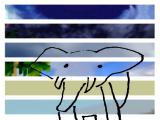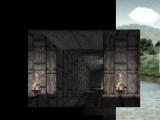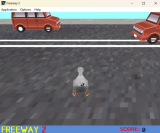snapman's blog
Potential Controversy
Thu, 01/31/2008 - 11:27 — snapmanTwo days ago I had an incredible idea for a hilarious, but easy to make game. I've spent some time collecting the basic sources for it, ranging from sounds to art, to ideas, to "implementation/translation". There's just one problem with this idea. It is likely to be highly controversial. It's a parody of a well known game series, but with a strong message, that is likely to upset a fairly large group of people. The presentation is pure Stephen Colbert, where I present ideas in an accurate, but self-contradictory manner.
The game would not be fun, for the most part. Much of the humor would come from this fact. But it would be interesting, and informative.
I sometimes wish Glorious Trainwrecks had private messaging. I'd like to ask SpindleyQ if he feels it's appropriate or not. If I find him on IRC, I'll ask him there. If he thinks it would be too much hassle for Glorious Trainwrecks, or not in the spirit of the site, I'll take the idea in another direction: either as a Shockwave Flash game submitted somewhere else, or as an animation on YouTube.
My first instinct was to make the game in Klik & Play, simply because I've been getting to grips with the system again, and I thought it would be a fun experiment. But the topic may be too serious for the light-hearted nature of our community.
W.U.1 Addendum
Mon, 01/28/2008 - 20:11 — snapmanAttached are screenshots from my linked even/odd object pairing tests. There are two shots of the rope/grappling hook test (old version) and three from an attempt using the same idea to generate artillery-like landscapes. (I have it set up to make the ground in the middle steeper than the flatter terrain, in hopes of it generating mountains.)
Sorry about the boring solid-colored research-paper-like graphics, but I am just messing around with behaviors and effects right now.
Weekly Updating 1: Grappling Hooked
Mon, 01/28/2008 - 11:14 — snapmanIn an effort to help this site grow, I will be giving weekly updates on my various experiments with Glorious Trainwreck's favorite democratized game creator, Klik & Play. I haven't used KnP in 8 years, during which I've learned a fair amount about both programming and game design by making games in other languages, and working towards obtaining a college degree in computer science (the last part being in the last 3 1/2 years). So far, returning to the event-based game design paradigm has felt extremely limiting. Many simple things I could do in more advanced languages are either difficult or impossible to accomplish in Klik & Play. What I've found very interesting, though, is that solving Klik & Play problems rely on both computational, and physical strategies. What would be impossible to do with the built-in object movements can usually be done with numbers, and what is difficult to do with the limited calculation abilities of Klik & Play can be assisted with the built-in movements, or other properties and behaviors of the program.
One of my later projects in KnP was an attempt at recreating the grappling hook, or "Ninja Rope" from the game Worms. At the core of my original design was a platform movement object constantly shooting particles at the grappling hook center point. I assumed that I could measure the distance from the player to the center point by the number of particles not destroyed by contact with the hook. Whenever the number was too high, I would lift the player higher. Eventually there would be some swinging code, changing angles, and everything would work out fine. Of course, this didn't work at all. The player quickly levitated off-screen, never to be seen again.
Yesterday, I took up the problem again. My first notion was to create chained object groups in even-odd pairs, aligning them by hotspot to action point. After a lot of testing various object selection methods (to some rather hilarious and frustrating results), I found a simple cycling scan worked best to build a segmented chain. I could easily manipulate the length by setting visibility cutoffs for chain elements with values higher or lower than the desired length. The biggest drawback to this multi-object line was the apparent refresh rate, due to the cycling update. With only 16 chain elements, the fastest I could rotate the construct was once per 30/100th of a second. I went as far as adding objects to calculate and visualize impulse speed (IE: letting go of the rope), but the results were inconsistent.
Today I plan to revise the system to a two-origin line, by calculating the end point of the chain directly, and drawing the line from both ends. This should effectively double the refresh rate, and thereby the maximum rotation speed. But by calculating the end point directly, the chain becomes not the driving force of the simulation, instead a visual cue. If the visual representation of the chain becomes broken slightly at high speeds, at least the actual positioning of the end point will remain consistent.
I have taken screen shots of this experiment, but I'm not currently at the computer they're on. I might post them later if people are interested in them. Next time I'll either talk about the difference between a swing simulation powered by update wait adjustments vs distance adjustments, or I'll talk about misuse of the built-in platform movement to approximate a limited physics simulation. Whichever people are more interested in. Or I'll post some pixel art. Who knows for sure!
Back in the heyday of Klik, I sometimes called myself "The Master of Useless Effects". I've spent a lot more time on game design balancing as of late, but sometimes it's just fun to make effects. At least now I have a better chance of transforming these ideas into finalized projects!
Statement of Purpose
Thu, 01/24/2008 - 12:23 — snapmanWhile I realize this community is relatively new, it seems a pity that so few people participate in such an inviting opportunity to rapid prototype simple games and quickly receive feedback. Much of the humor of this site comes from the internet stigma of Klik & Play, which can both serve as a retro incentive for creators to return to using tools they had long since discarded (and discover new possibilities), and to deter potential creators with our self-deprecating ironic use of horrendous pre-amateur design. While we can appreciate the unique aesthetic of non-design, it should not be the isolated goal of Glorious Trainwrecks to reproduce the past without recognition of the present. There have been changes in the independent gaming scene. Just because we use a tool from 1994 doesn't mean we must use it as it was used in 1994.
A defense of Klik & Play:
On the surface, KnP may appear limited. And in many ways it is. Events will never be like lines of code, and "Active Object" is not the only class we need. But consider this: Many of the games gaining recognition in the independent gaming community today could have easily been produced in KnP, if not for a few surface details in graphics. KnP could be used to make interactive comedy like "I wanna be the Guy" or "Death Worm". It could be used to make surrealist experiences like "Psychosomnium", or introspective commentaries like "Passage". It could even present political commentary like "Harpooned". KnP may lend itself more easily to comedy, but it gives your average Joe a chance to try to say something with a game.
My goals here on this site are twofold. First, I will use my participation in the KOTMK to experiment with pure game design. I wish to see what new goals I can set for a player, and what new ways I can have the player interact with a system. Secondly, I will begin a Hosted Trainwreck, the purpose of which will be to push the boundaries of advanced KnP event writing. KnP is capable of far more complex things than we think. The Moteur engine proved this. KnP Tetris proved this. Time and time again, people have done unexpected things with a limited palette.
And who knows? Maybe my impression that KnP still holds potential is perfectly in line with the overambitious naive klikkers of yesteryear. If my lofty ideals are doomed to irony, there is no better place for me to fail than here.
Shovel some more coal on the furnace, and sound the steam whistle. This train is on its way.






